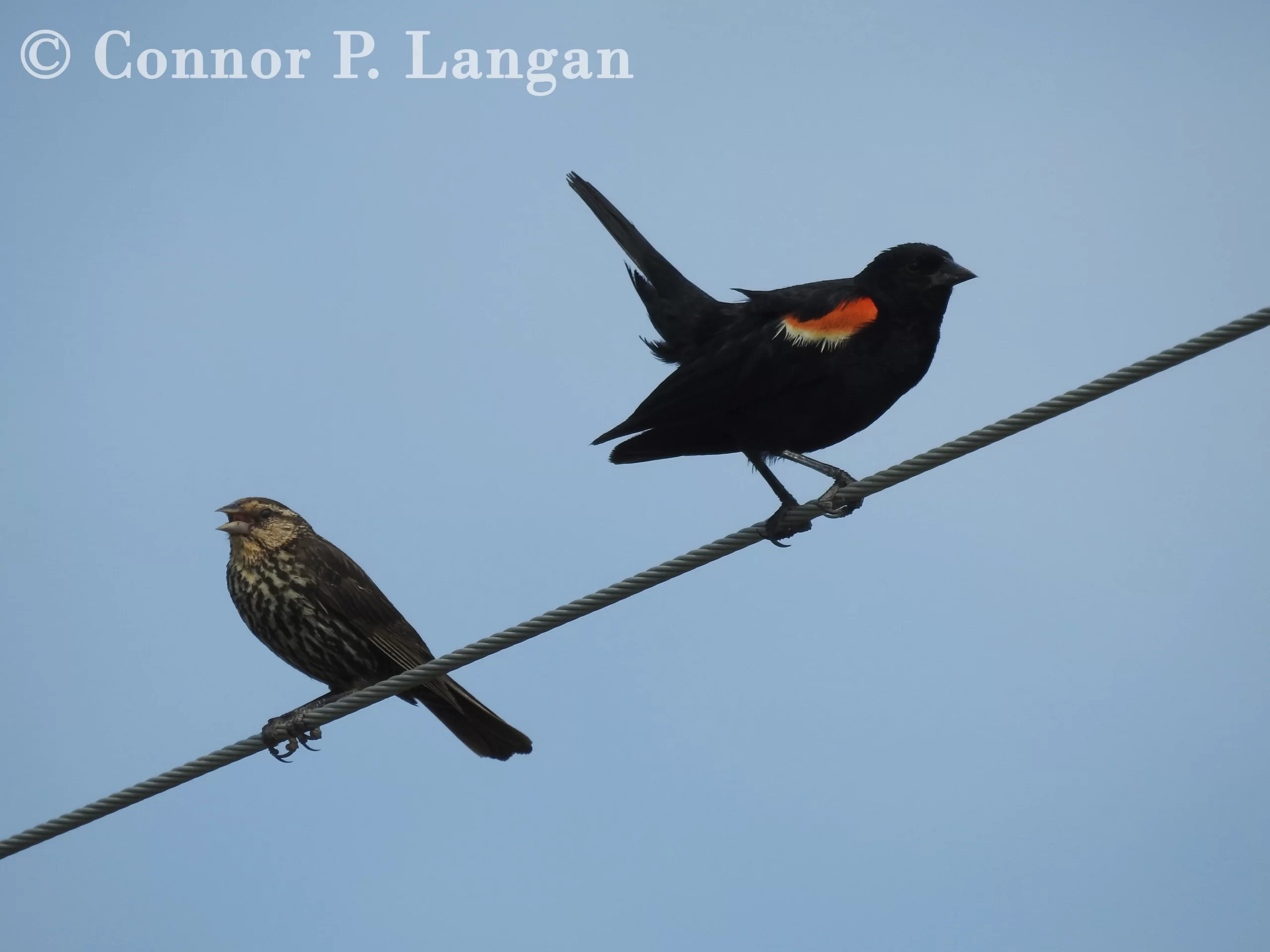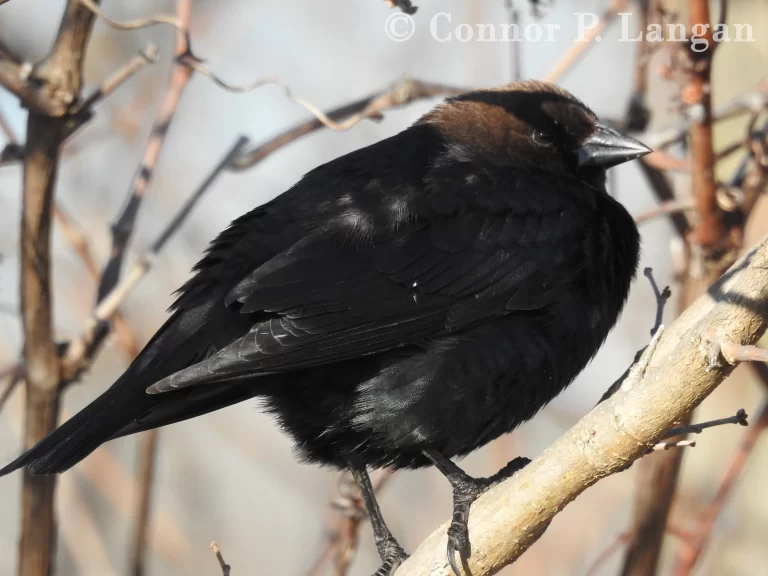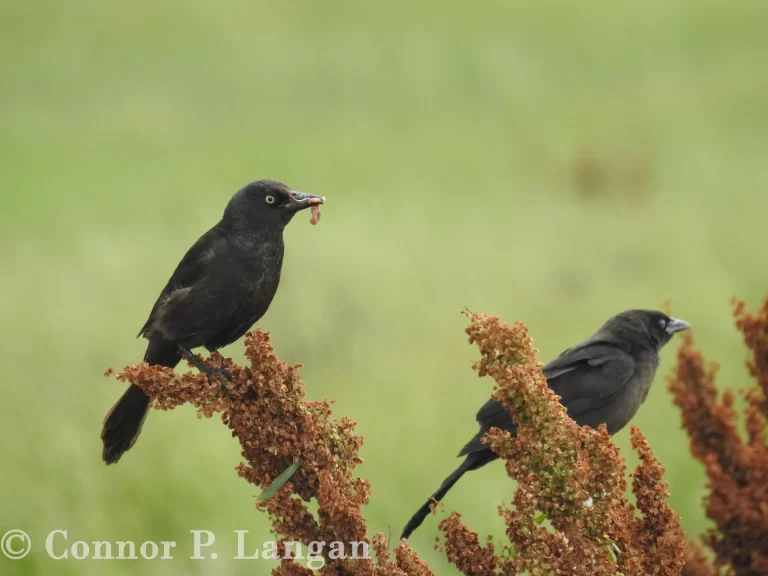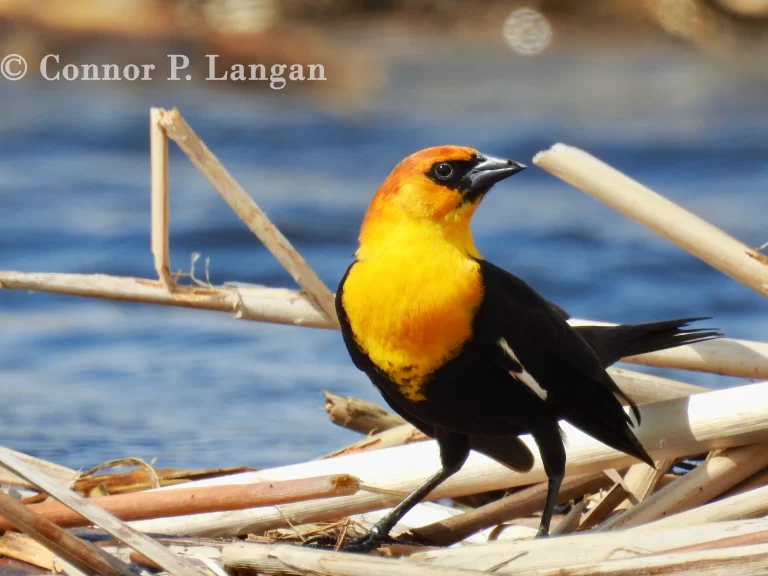Description
One of the most abundant birds in North America, Red-winged Blackbirds are small blackbirds with slim, conical beaks and medium-length tails.
Red-winged Blackbirds measure anywhere from 6.7 inches to over 9 inches long, while these birds may weigh 1.1 to 2.7 ounces.
Males possess the namesake red shoulder patches that are bordered by yellow. However, males are entirely black save for their colorful shoulder patches. During the nonbreeding season, males maintain the same colors, but their plumage develops a scaly-looking appearance.
Females are a mix of mottled brown colors. Their undersides are a pale color with dark streaks, while their crowns, backs, wings, and tails are a dark brown color. Additionally, females have tawny-colored throats and pale supercilia. Females have the same appearance year-round.
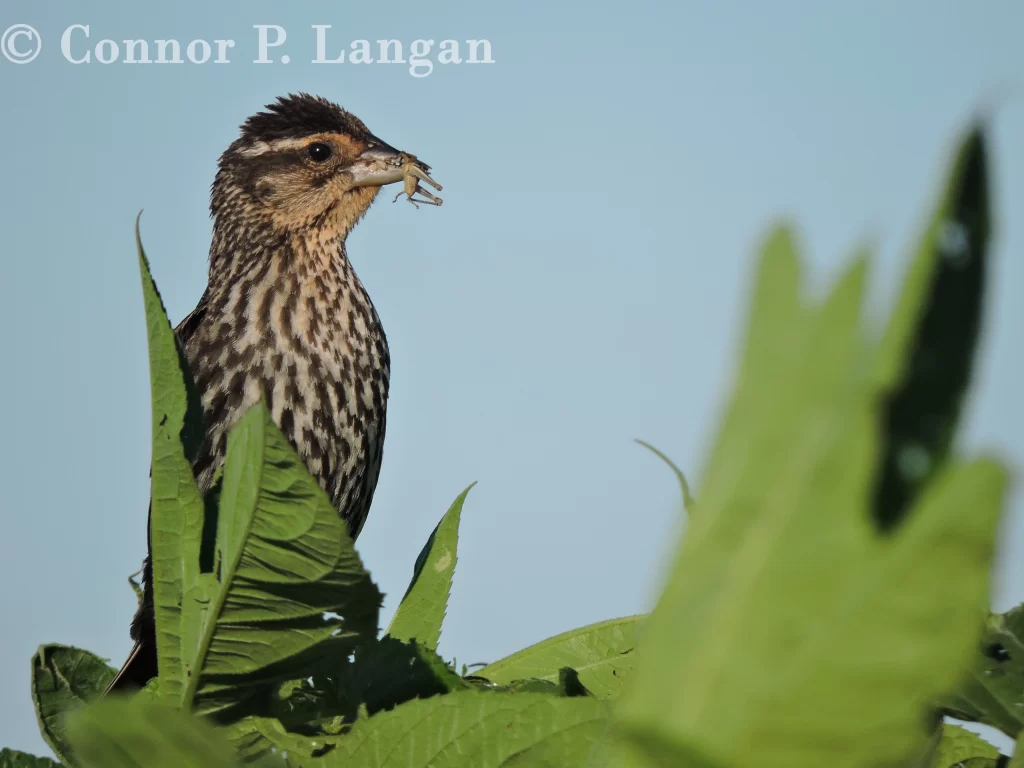
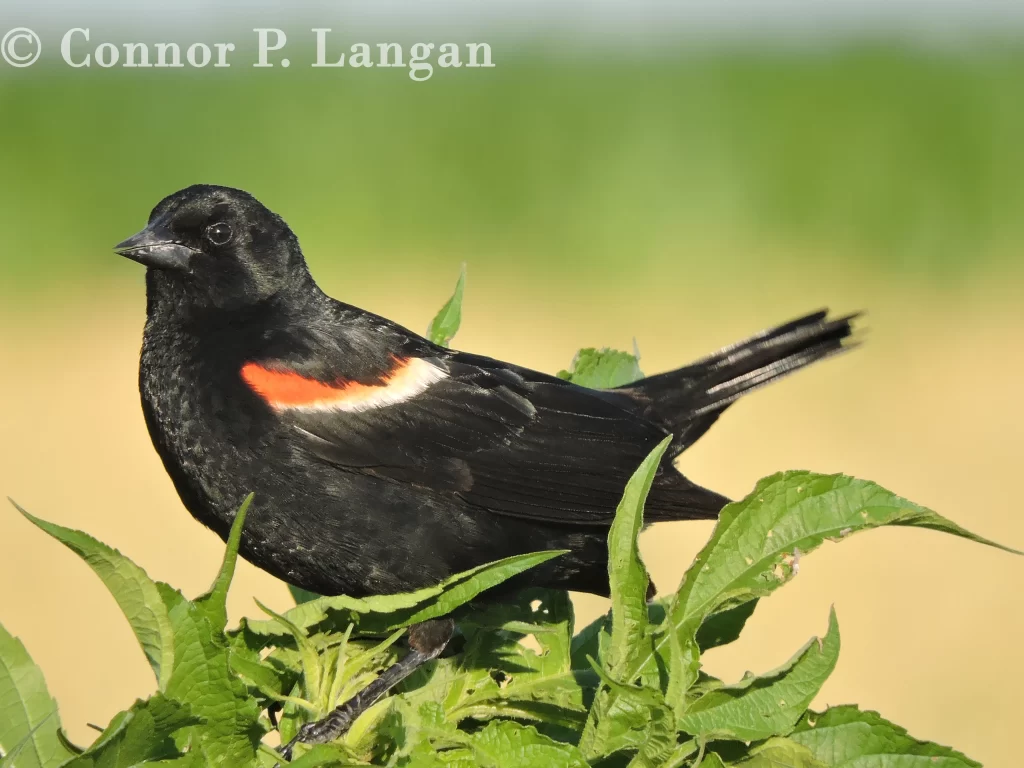
Behavior
Red-winged Blackbirds are known for their territorial behaviors during the breeding season. Males and females are bold during this time of year as they dive-bomb any intruder that gets too close to a nest.
These blackbirds associate with their mates during the breeding season, but these birds are very gregarious during the nonbreeding season, as they form flocks that may number in the hundreds of thousands.
Red-winged Blackbird Diet
Insects make up the majority of a Red-winged Blackbird’s diet during the breeding season. However, Red-winged Blackbirds transition to a diet of seeds and grain in the nonbreeding season.
Habitat
This species is quite adaptable, being able to breed in wetlands, edges of ponds, ditches, meadows, and anywhere else that features wet conditions and nesting cover.
During migration and winter, look for these blackbirds in parks, agricultural fields, marshes, shelterbelts, and a variety of other locations.
Range
Red-winged Blackbirds breed throughout the United States and most of Canada and Mexico. The northern extent of this species reaches Alaska, while these birds reach Central America at the very south end of their range.
Red-winged Blackbirds survive year-round in Mexico and the southern half of the United States, while birds in the northern half of the United States and Canada migrate south during the nonbreeding season.
Breeding
These birds are polygynous by nature, with dominant males attracting an average of 5 females to their territory—though they may have around 15 females if suitable habitat is scarce.
Females handle all of the nest-related responsibilities, though males may help females to choose a nest site. Nests are hidden among marsh vegetation or woody vegetation.
Females construct nests from marsh vegetation, tree bark, and grasses. Nests are anchored to surrounding vegetation and the materials are often held together with mud. The interior of the nest is lined with soft materials like grasses and feathers.
Red-winged Blackbird females produce 1 to 2 broods of young each year, with each clutch containing 2 to 4 eggs. It takes between 11 to 13 days for young to hatch, with nestlings departing the nest just shy of 2 weeks later.
Backyard Birding
Red-winged Blackbirds are not the first birds that most consider when thinking about backyard birding. However, this species does stop by bird feeders on occasion. Expect these blackbirds to be foraging on the ground under a bird feeder.
This species may nest on your property if you have tall grasses, pastures, or a water source nearby.
Red-winged Blackbird Population Status
Today, Red-winged Blackbirds have a total population of around 180 million birds. Although they are a common bird species, their numbers have declined by almost 30% in the last half-century.

